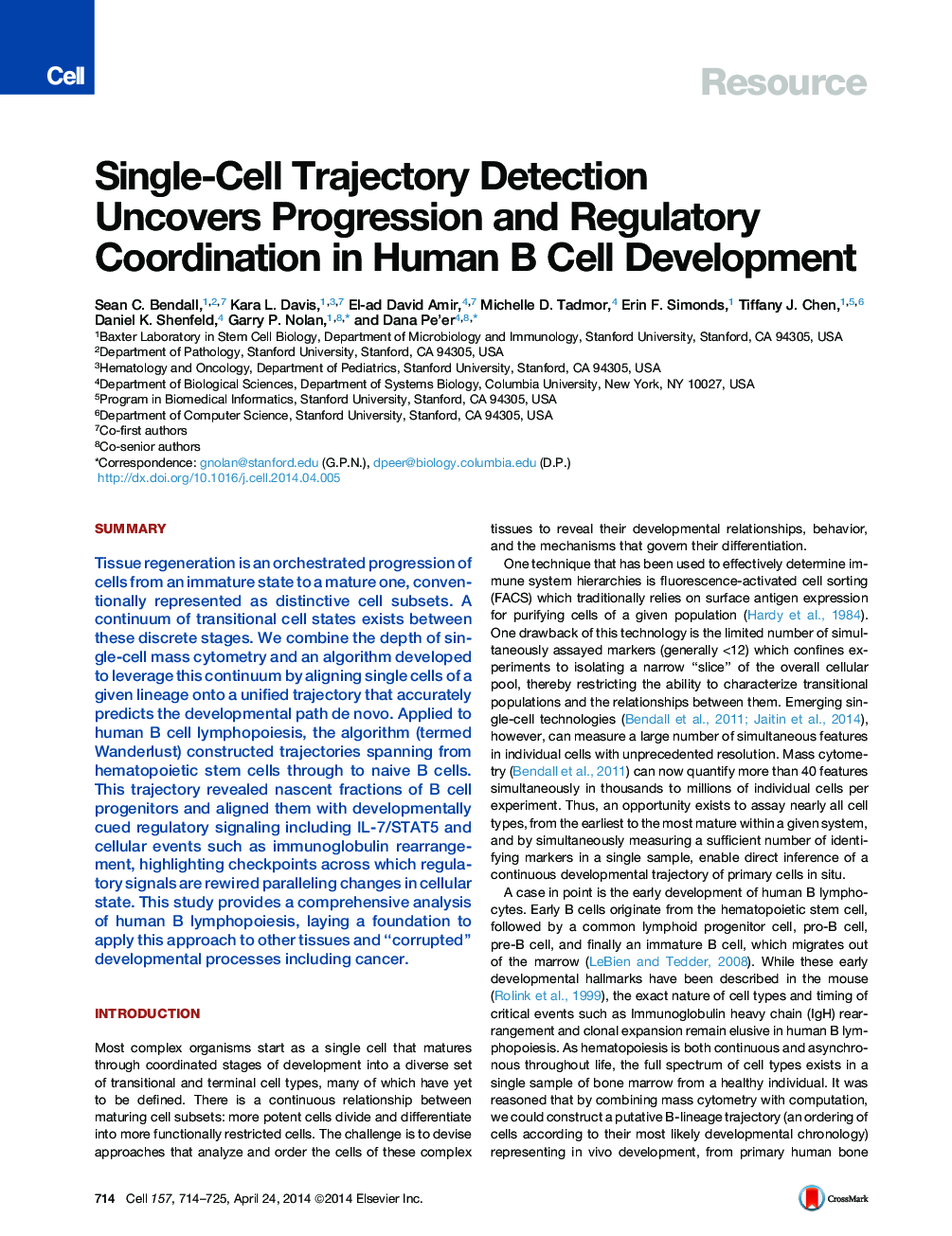| Article ID | Journal | Published Year | Pages | File Type |
|---|---|---|---|---|
| 2035546 | Cell | 2014 | 12 Pages |
•Wanderlust aligns single cells on a trajectory according to their developmental path•Mass cytometry plus Wanderlust infers path from HSCs to naive B cells•Trajectory identifies precursor B cell populations where rearrangement occurs•Discovery of coordination points dictating cell fate decisions
SummaryTissue regeneration is an orchestrated progression of cells from an immature state to a mature one, conventionally represented as distinctive cell subsets. A continuum of transitional cell states exists between these discrete stages. We combine the depth of single-cell mass cytometry and an algorithm developed to leverage this continuum by aligning single cells of a given lineage onto a unified trajectory that accurately predicts the developmental path de novo. Applied to human B cell lymphopoiesis, the algorithm (termed Wanderlust) constructed trajectories spanning from hematopoietic stem cells through to naive B cells. This trajectory revealed nascent fractions of B cell progenitors and aligned them with developmentally cued regulatory signaling including IL-7/STAT5 and cellular events such as immunoglobulin rearrangement, highlighting checkpoints across which regulatory signals are rewired paralleling changes in cellular state. This study provides a comprehensive analysis of human B lymphopoiesis, laying a foundation to apply this approach to other tissues and “corrupted” developmental processes including cancer.
Graphical AbstractFigure optionsDownload full-size imageDownload high-quality image (308 K)Download as PowerPoint slide
